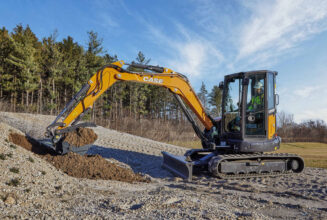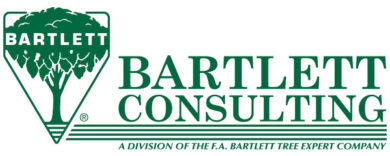What Do Clients Really Want?
By Michelle Sutton
In the early days of my landscape consulting business, I tended to charge into problem-solving minutes after my arrival on the site, but this was alienating to my clients. I learned that a relaxed conversation needs to take place, one that is strategically designed to get at what my client really wants. Asking the right questions is a hugely important part of that interaction; I pose many questions, but there are three that I find most critical.
The first three Qs
1) “What do you want your garden to do for you?”
I find out the uppermost three or four things they want their garden to provide: privacy, beauty, a sense of place, food for wildlife, food for humans, invigoration or relaxation, exercise/a garden to tend, increased property value, healing or remembrance, cut flowers, and so on. We horticulturists and landscapers think this way routinely, but our clients may not have. Helping them home in on the functions and services they want their landscape to provide brightly illuminates the next steps you take together.
2) “How much time per week do you like to spend gardening?”
This gets at how much the clients actually enjoy gardening and how realistic their expectations of maintenance are. If their answer is “none” or “a few hours,” I gently inquire as to whether they plan to hire help and what their budget might be for that. I want to design something that they can maintain without it becoming a chore or a financial burden.
3) “What do you have in place now that works well for you? And what bugs you?
A walk around the neighborhood together yields incredibly helpful information about the client’s preferences.
The Jenks Farmer approach
South Carolinian Augustus Jenkins Farmer, known as “Jenks” (jenksfarmer.com) is the author of Deep-Rooted Wisdom: Skills and Stories from Generations of Gardeners (Timber Press, 2014). In addition to being a writer, he is a speaker, an organic lily farmer, and designer specializing in environmentally sustainable landscapes.
“A lot of times folks come to me because a previous design didn’t work out for them,” he said. This could be because the first design was overly ambitious or expensive. Sometimes it’s because the previous designer didn’t really take the time or ask the right questions to find out what the client really wants.
Farmer first tries to find out what the client knows about him and his approach, to assess if they’re the right fit for each other. Both verbal and non-verbal cues come into play. “I have a gut feeling in the first 10 minutes if we have totally different visions, or if someone’s not going to pay their bills,” he said.
If a rapport is established, Farmer asks the client, “What do you really want, and what can you hope to maintain? What are you dreaming of?” Farmer will “reign in” that dream by designing a series of plans that the homeowner can implement in stages. Stage 1 could be a small vegetable garden. Stage 2 adds fruit crops or a perennial border. Stage 3 could get into hardscape and woody plants. “The goal is bring them closer to their dream based on what they’re willing to put it into it,” he added.
To get at that essential maintenance question, Farmer asks, “What do you want to spend Saturday doing? How much time are we talking about? If I give you names of nurseries for the best plants, are you willing to go out to those places?” Then he asks clients about their background, like where they grew up. This gives Farmer clues about what plants might have emotional resonances for the clients. “A lot of times those plants with emotional connections for my clients are food plants, so I emphasize those in the designs,” he said.
To get at their taste in ornamentals, Farmer asks clients to show him a garden that inspires them. “If they pull out a book from England, I know I have to get them to walk around their neighborhood to get a more realistic feel for what grows here in South Carolina.”
The Bloom approach
Liz Elkin is the proprietor of Bloom Landscape Design and Fine Gardening in New Paltz, N.Y. (bloomfinegardening.com), and is admired for her beautiful and smart installations in and around this college town. In addition to the kinds of questions Jenks Farmer and I described above, Elkin asks about the client’s favorite colors in the context of the plants they are drawn to.
Sometimes Elkin has to consider the cultural implications of color. “For example, I have a client from Korea who loves natural-looking woodland gardens,” she said. “These tend to have a lot of white flowering plants, especially when we are focusing on deer-resistant plants. In parts of Asia, like Korea, white flowers are commonly used for funerals, so it might not be the best color for my client to see throughout her landscape.”
Elkin asks if her clients have a Houzz and/or Pinterest image collection. “Seeing a client’s personalized image portfolio can be invaluable when designing their landscape,” she added. “I also like to show them examples of current trends, like the wild meadow style, alongside a more traditional garden style, and ask which one they prefer. Sometimes, a client will be attracted to a combination of styles. Other times, a client will tell me a style that they want, but when they see a picture of it, they realize that that was not what they meant.”
Elkin asks about priority locations in the garden: What is the first thing the clients see when they come home from a long day? What is their view from their home office window? What do their guests see when sitting on the client’s patio? “When a client feels overwhelmed by the endless options for their landscape, asking about their priority views can really help focus the entire project,” she said.
Finally, Elkin tackles irrigation. “Irrigation can be simple or very complicated, so it is important to get a feel for how hands-on a client wants to get with their own garden watering,” she said. “Proper irrigation can make or break a garden, especially a freshly installed one. Asking early on about plans for watering can prevent headaches for everyone in the future.”
The David Fernandez approach
David Fernandez is a landscape designer and owner of the highly esteemed Cayuga Landscape in Ithaca, N.Y. (cayugalandscape.com). “Often in my first meeting I look for ways in which I’m similar to the client so that we can establish a rapport,” he said. “I also pay close attention to cues around their home as to their aesthetic preferences. I show them images on my iPad of designs and plants they may like.” Here is an excerpt from an e-mail that Fernandez sends to new clients who have requested a master plan.
Dear ____,
I enjoyed our phone conversation yesterday and look forward to meeting you in Ithaca sometime soon. You have a beautiful site and I look forward to being part of your design team.
A good design is a blend of three key factors: 1) The Site 2) The Owner’s Program for Use and 3) The Designer’s Creativity. Yesterday, we began our discussion of your “Program” … that is, what you intend for your new home site, such as: the type of entry courtyard you’re planning, the need for low maintenance and simplicity in the front courtyard design, the inclusion of perennial beds in the back yard and other factors.
When you have a chance, could you send me an email with any other features you may want to include? Here are a few typical considerations:
Screening from neighbors while preserving good views — how much screening is desirable?
Storage on site for boats, extra cars, campers, firewood, air-dry laundry areas etc.
Special garden features, such as fenced vegetable gardens, water gardens or fountains, fire pits or outdoor kitchens, swimming pools, etc.
Favorite (or detested) plants. Do you have some old favorites that you’d like to include?
Style: the front courtyard will be a formal parterre garden with lavender and perhaps boxwood. The side and backyards might be more naturalistic … but what do you prefer?
Environmental modification: windscreens for parking courtyard, trees for shade (many homeowners in your lakeside neighborhood are surprised how hot their houses can get in afternoons).
Hardscape preferences: flagstone vs. brick or brick-pavers, wood fencing vs. black-coated wire fencing, inclusion of boulders, sculpture, or other features.
Special systems: Automated irrigation systems, night lighting systems, drainage systems.
No doubt there are other considerations too … but this is a good start!
Best regards,
David
Michelle Sutton (michellejudysutton.com) is a horticulturist, writer, and editor.



